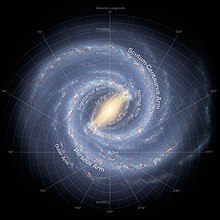"It would be a poor thing to be an atom in a universe
without physicists, and physicists are made of atoms. A physicist is an
atom's way of knowing about atoms."
George Wald
Before we continue the theory of the Standard Model any longer we have to consider what the overall goal is:
Before we continue the theory of the Standard Model any longer we have to consider what the overall goal is:
The Fundamental.
No matter how hard we try to keep dividing matter until we find it's fundamental we are just left with more and more options - a type of 'Particle Zoo', this leads to methods like the Standard Model which try to bring order to the chaos of modern physics.
The 'fundamental', 'fundamental particle' or 'fundamental constituent of matter' is the goal for particle physics - to find something that makes up all matter. The origins of particle physics started when people considered what makes up the visible world around us. People like the pre-socratics (philosophers before Socrates), the ancient Chinese or the ancient Indians thought the fundamentals could be found in the elements of our world - not the periodic table but fire, air, earth and water. The first person to propose an atomic theory of matter was Democritus, another pre-socratic philosopher who thought that matter was made up of tiny, inert bodies which we know today as atoms.
Atomic Theory continued to be developed until the atom was fully realised and the periodic table was established in the 19th Century. The word atom comes from the Greek atomos which means 'indivisible', however today we all know that atoms are not fundamental. Each element has a different atomic structure so the so called 'building blocks of the Universe' turn out to have more and more building blocks themselves.
We now know that the atom comprises of protons, neutrons and electrons - these protons and neutrons are comprised of quarks which are held together by gluons and until further evidence is found the next stage in a mystery.
The search for the fundamental particle reminds me of a Koch Snowflake (which is a type of fractal), this 'snowflake' starts off as a single triangle which keeps having smaller triangles - with the length a third of one side of the previous added on ... let me show you:
Atomic Theory continued to be developed until the atom was fully realised and the periodic table was established in the 19th Century. The word atom comes from the Greek atomos which means 'indivisible', however today we all know that atoms are not fundamental. Each element has a different atomic structure so the so called 'building blocks of the Universe' turn out to have more and more building blocks themselves.
We now know that the atom comprises of protons, neutrons and electrons - these protons and neutrons are comprised of quarks which are held together by gluons and until further evidence is found the next stage in a mystery.
The search for the fundamental particle reminds me of a Koch Snowflake (which is a type of fractal), this 'snowflake' starts off as a single triangle which keeps having smaller triangles - with the length a third of one side of the previous added on ... let me show you:
 |
| A Koch Snowflake Fractal (Click to Zoom) |
















